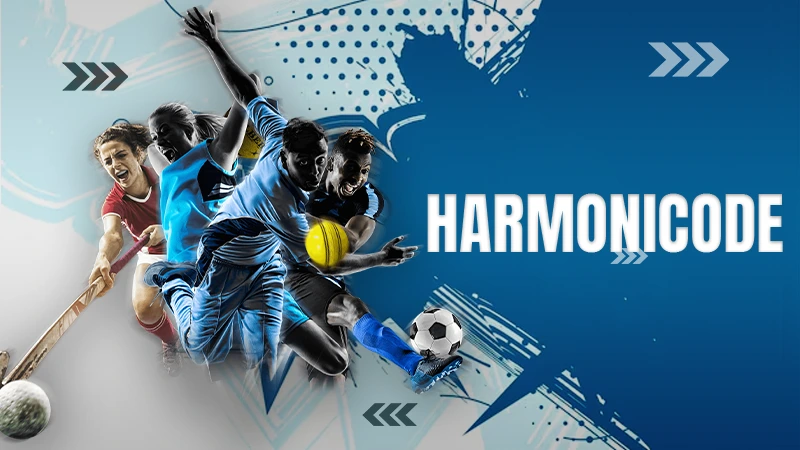Sports science continues to evolve rapidly, and one of the most innovative concepts making waves today is Sports Harmonicode. This cutting-edge approach blends biomechanics, rhythm, and coded body mechanics to optimize performance and prevent injuries. Athletes and coaches worldwide are beginning to explore its full potential, making it an exciting development in modern sports training.
Athlete Profile: Sports Harmonicode Biographie Table
| Attribute | Details |
| Concept Name | Sports Harmonicode |
| Founded | Conceptualized in early 2020s |
| Core Focus | Biomechanical rhythm optimization |
| Primary Use | Sports training, performance, injury prevention |
| Notable Supporters | Elite athletes, physiologists, coaches |
| Related Fields | Sports science, kinesiology, performance analytics |
| Key Technology Used | Motion sensors, rhythm mapping, AI |
| Global Reach | North America, Europe, Asia |
| Official Term Recognition | Emerging but not yet institutionalized |
What is Sports Harmonicode?
Sports Harmonicode refers to the coded rhythmic patterns within an athlete’s movement that can be analyzed and optimized to enhance performance. The term blends “harmonics” (natural frequencies in movement) and “code” (structured patterns), creating a framework to assess how body mechanics interact during athletic performance.
Origins and Evolution of the Concept
Initially emerging from a blend of sports biomechanics and data science, Sports Harmonicode was developed to uncover hidden efficiencies in athletic movement. It began gaining attention in elite training centers and research institutions, especially for its ability to reduce overuse injuries and fine-tune performance.
How Sports Harmonicode Works
Using advanced tools like motion sensors, wearable tech, and AI analytics, sports scientists capture rhythmic movement data. This data is then translated into harmonic patterns or “codes” unique to each athlete. Coaches and therapists can use these codes to:
- Identify mechanical imbalances
- Improve muscle synchronization
- Customize recovery protocols
- Optimize training loads
Key Benefits for Athletes
- Injury Prevention: By decoding inefficient or dangerous patterns, interventions can be introduced early.
- Performance Boost: Tweaking harmonic sequences can lead to smoother, more powerful movements.
- Personalized Training: Harmonicodes allow for precision-based programs tailored to individual needs.
Application Across Different Sports
The Sports Harmonicode method is not limited to one type of sport. It has applications in:
- Football/Soccer: Enhancing foot strike rhythm and sprint mechanics
- Basketball: Optimizing jump cadence and lateral movement
- Tennis: Improving swing rhythm and court movement
- Running/Track: Mapping stride frequency and balance
- Swimming: Coordinating stroke cycles and breath control
Technology Behind Sports Harmonicode
Modern tools power the Harmonicode system:
- AI & Machine Learning: For interpreting rhythmic data in real-time
- Wearables: Smart sensors on joints or shoes that collect biomechanical data
- Motion Capture Systems: 3D video analysis for harmonic code extraction
- Mobile Apps: Athlete dashboards to track improvements
Challenges and Criticism
While promising, Sports Harmonicode is still in its early stages. Some challenges include:
- Standardization: No global standard for how harmonic codes are defined
- High Cost: Advanced tech and interpretation can be expensive
- Skepticism: Traditional coaches may resist data-heavy approaches
Future of Sports Harmonicode
As awareness grows, Sports Harmonicodes is expected to become a foundational pillar in sports performance training. With improvements in AI and wearable tech, decoding harmonic efficiency may become as routine as a warm-up. Universities and pro teams are already investing in pilot programs to integrate this methodology into daily training regimens.
Real-World Examples and Use Cases
- Olympic Training Centers: Used to assess movement precision in track athletes.
- Soccer Academies: Applied to analyze dribbling and sprinting rhythms.
- Rehabilitation Clinics: Helps athletes return to play faster by identifying safe biomechanical patterns.
Coaches and Experts’ Viewpoints
Many high-performance coaches consider Sports Harmonicodes the missing piece in elite development. Experts believe this approach could rival traditional strength and conditioning methods, especially in sports requiring precise timing and movement control.
How to Learn and Implement Sports Harmonicodes
Athletes, trainers, and sports scientists can begin by:
- Attending certified courses or workshops
- Partnering with labs offering motion capture and analysis
- Using mobile apps designed for rhythm mapping
- Working with AI-driven sports platforms
Read more: Harmonicode Sports – Revolutionizing Sports Analytics and Fan Engagement
FAQs about Sports Harmonicode
The main purpose is to optimize athletic performance by decoding and refining the body’s natural movement rhythms.
Yes, it applies to beginners and professionals across nearly all sports, although high-level athletes may benefit the most initially.
The concept is grounded in biomechanics and supported by early research, though more peer-reviewed studies are expected in coming years.
Yes, wearables and motion capture systems are typically required to generate accurate harmonic data.
Absolutely. By identifying harmful movement patterns early, coaches can design safer training programs.
It’s both. It starts as an analysis tool but evolves into a core part of athletic training and recovery routines.
Conclusion
Sports Harmonicode is a groundbreaking approach to sports science that holds immense promise. By focusing on movement rhythm and coded performance patterns, it empowers athletes to achieve new levels of efficiency, reduce injuries, and personalize their training. As technology becomes more accessible, this method could revolutionize how we train and perform in the years to come.
